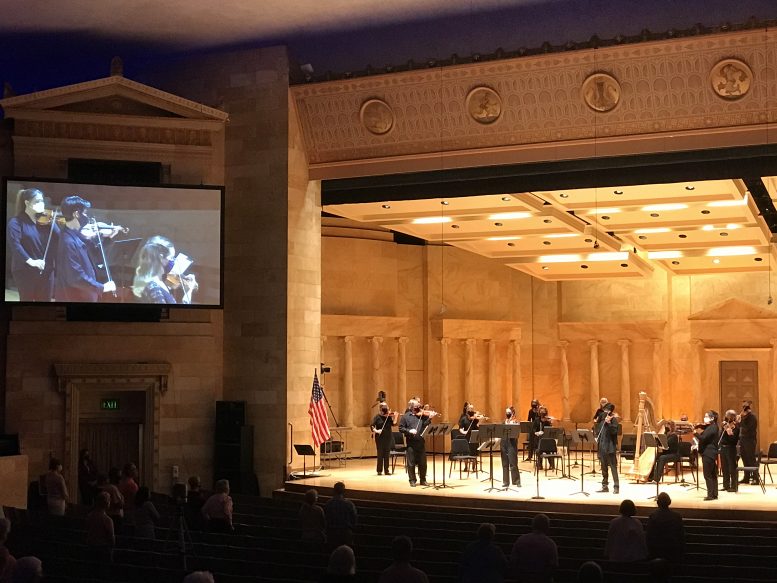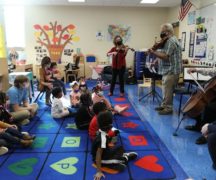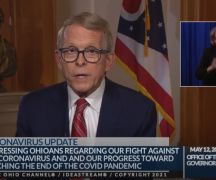By DAVID DUPONT
BG Independent News
Sunday’s Toledo Symphony Orchestra concert ended with applause. First a standing ovation for the orchestra, and then cheers from the musicians on stage for those in the audience.
They were present – as were those on Friday and Saturday nights – for the return of the Toledo Symphony after last season was cut short by the pandemic. State regulations limit the number of listeners in the Peristyle to 225, distanced in pairs and quartets throughout the venue.
That last concert in March, as principal second violinist and artistic administrator Merwin Siu told the audience, seemed both an end and a beginning. It was the first time the concert was livestreamed so ticket holders and others, some across the globe, could watch a live Toledo Symphony concert. Now that will be a regular part of the way the symphony operates. Through its new TAPA Streaming the orchestra will offer tickets for livestreamed concerts as well as rentals of previous concerts, including this one. The live performances through December are sold out.
The orchestra is “recomposing its season,” Siu said.
So, what more fitting way to open that season than with a recomposition of a beloved classic, Antonio Vivaldi’s “Four Seasons,” reimagined by British-German composer Max Richter?
First, though, the orchestra served some Vivaldi straight up. Concerto for Four Violins introduced the concert’s four soloists – Kirk Toth, Téa Prokes, Siu and Gyusun Han.
As they traded phrases the distinctive tone of each was evident. The interplay was crisp, yet conversational. The tone of the small orchestra was transparent, and seemed more so as they were spread across the Peristyle stage.
While in previous times the musicians would be shoulder to shoulder, now the ensemble, each musician wearing a face covering, stretched out to fill the footprint of a Mahler-sized orchestra. The images projected on the screens above the stage, and into homes, transcends that distance, capturing telling details, slowly focusing in for a close up, and sweeping back to capture the entire ensemble.
The transparency of sound served the orchestra well on the main attraction, “Four Seasons Recomposed.” Though Richter had a heavy hand when carving out what of Vivaldi’s musical material he wanted to use, his work retains joy and bounce of the original.
Toth, the orchestra’s concertmaster, was the first soloist, his violin singing out the opening “Dolce.”
The composer’s method here was apparent. Fragments of Vivaldi were repeated softly underneath, with counter melodies slowly evolving.
If anything, Richter’s rendition is more evocative of the seasons. The second movement of spring features a spritely line that bounces above the other strings.
During the summer section, performed by Prokes, a thunderstorm builds and explodes followed by a beam of melody emerging from hushed strings.
Han delivers Vivaldi’s signature autumn melody, in all its stately glory, yet punctuated by unexpected syncopations.
The third movement is a jaunty dance tune, supported by swelling lower strings. The tune is just a fragment, yet each phrase twists in a different direction.
Winter is taken at a gallop by Siu with icy chords answering his increasingly dizzying line. The ethereal melody in the second movement sounds like an echo of the original.
But just because this and other melodies are not quite what the listener remembers does not mean they aren’t beautiful. And the same is true for the concert experience.
Even if everyone is masked and keeping their distance we are still sharing the experience of music being brought to life as we listen and watch.





